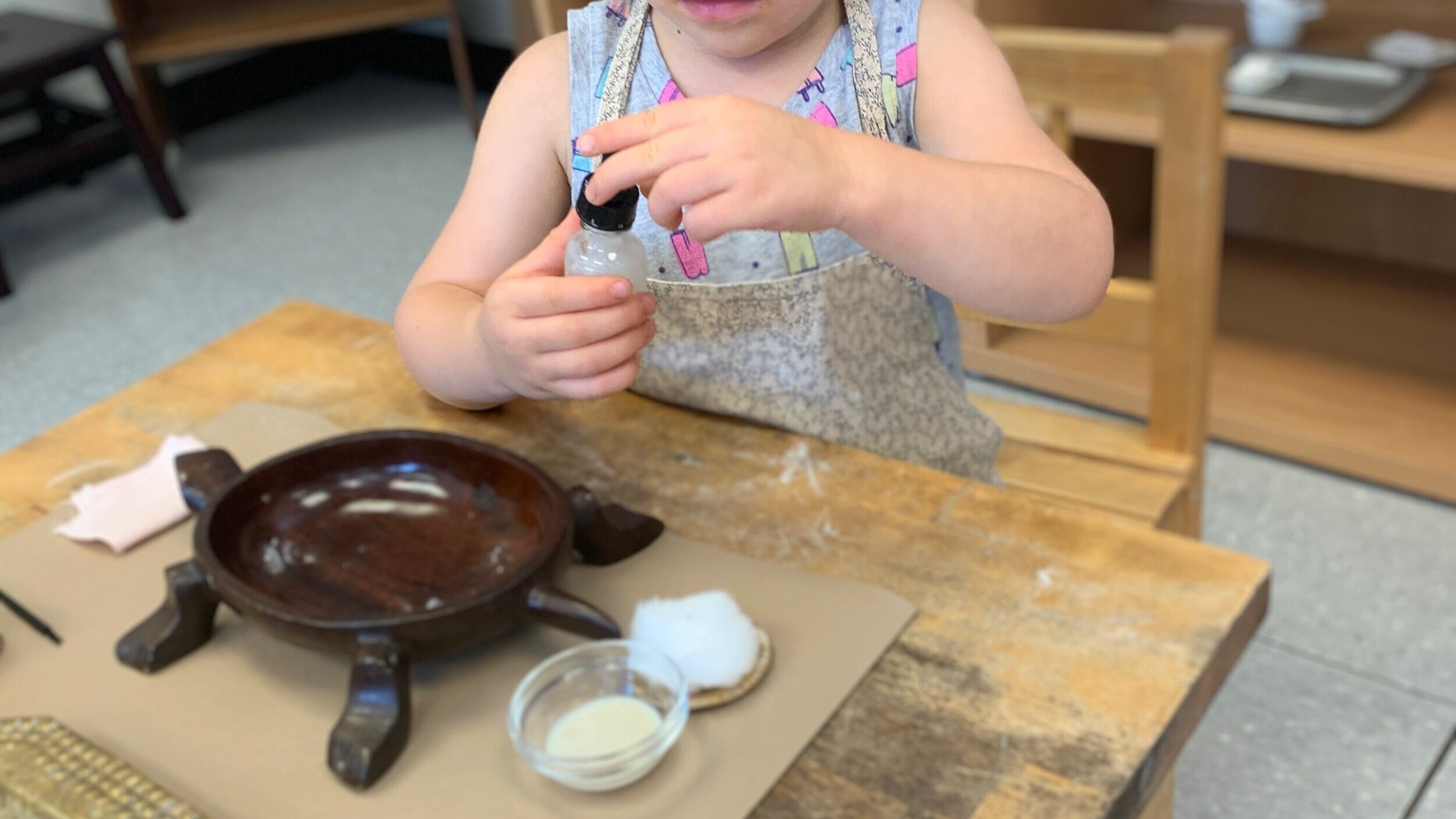“The senses, being explorers of the world, open the way to knowledge.” -Dr. Maria Montessori
Upon entering an authentic Montessori environment, one of the first things you will notice is the materials. It is unlikely that you will encounter any cartoonish alphabet posters, any star charts, any brightly colored plastic cubbies or any plastic tables. What you will find is a variety of wooden, glass, and metal materials, sturdy child-sized furniture, house plants, and walls decorated with prints of classical artwork from cultures around the world. Maria Montessori insisted that an environment as closely rooted in nature and reality as possible was the most beneficial to the individual child. Here are some of the reasons why!
1. Naturally Sourced Materials Promote Sensorial Exploration
Dr. Montessori emphasized the use of real materials in the classroom. Materials such as brass, wood, wicker, cotton, metal, and glass provide important information to the child. Some warm to the touch and cool with the air. Others are rough and dense. Some are heavy and some are light. Some are durable and some are fragile. These provide a multi-sensorial experience for the child.
2. The Natural World Is Important for Development
By utilizing materials that come from nature in your child’s belongings, it puts them closer in touch to the real world around them. By doing this, you are encouraging a connection to the earth and the environment.
3. Natural Materials Last
Plastics fade in color, and their quality is not normally the best. Natural toys made from wood or metal pass the test of time. They are durable, classic, and enduring. Many materials go years in the classroom before needing to be replaced. The child can work with the material with no fear of damage.
4. Natural is Better for the Environment
Taking care of the environment is at the core of Montessori philosophy. It’s a positive that our materials don’t sit in landfills for years on end. Instead they can be recycled, re-purposed, or they will biodegrade.
5. Natural Materials Are Beautiful
The prepared environment is an important concept of Montessori learning. Natural materials are beautiful and real, thus making them more attractive and appealing to the child.
6. They Inspire
Simple and natural materials create opportunities for open-ended work. This allows children to make their own discoveries, test hypotheses, and develop new skills, particularly when the child plays independently.
Overall, what parents want for their children is for them to feel comfortable, safe and happy, whether they are at home or at school. A Montessori environment is meant to mimic and be an extension of the home. Every detail is designed to ensure that it is a place where the child can feel truly at home and at ease. Our children deserve the best that we can give them, and the best that we can give them is reality and beauty.







